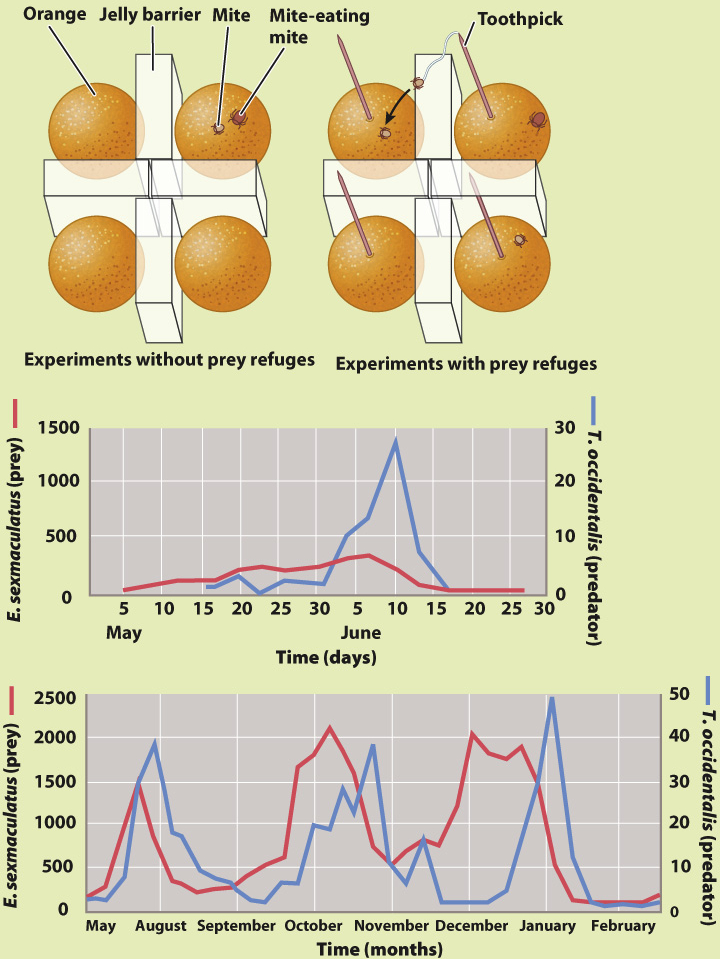HOW DO WE KNOW?
FIG. 47.6
Can predators and prey coexist stably in certain environments?
BACKGROUND In the 1950s, it was not clear whether a simple system of predators and prey could be stable and coexist indefinitely or whether both groups of species would become extinct as predators consumed all available prey. The results of experiments up to that time were equivocal, and ecologists knew that predators introduced to islands could hunt their prey to extinction.
HYPOTHESIS Ecologist Carl Huffaker hypothesized that predators and prey could stably coexist if temporary refuges were available for the prey.
EXPERIMENT Huffaker studied two kinds of mites: one that feeds on the surface of oranges, and another that preys on the orange-

RESULTS In the setup in which prey could not escape, a single cycle of increase and decline was observed: The population size of prey increased but was closely tracked by rising populations of their predators, and eventually both declined to extinction.
In experiments in which toothpicks were provided, the orange-
CONCLUSION Predator–
SOURCE Information from Huffaker, C. B. 1958. “Experimental Studies on Predation: Dispersion Factors and Predator–